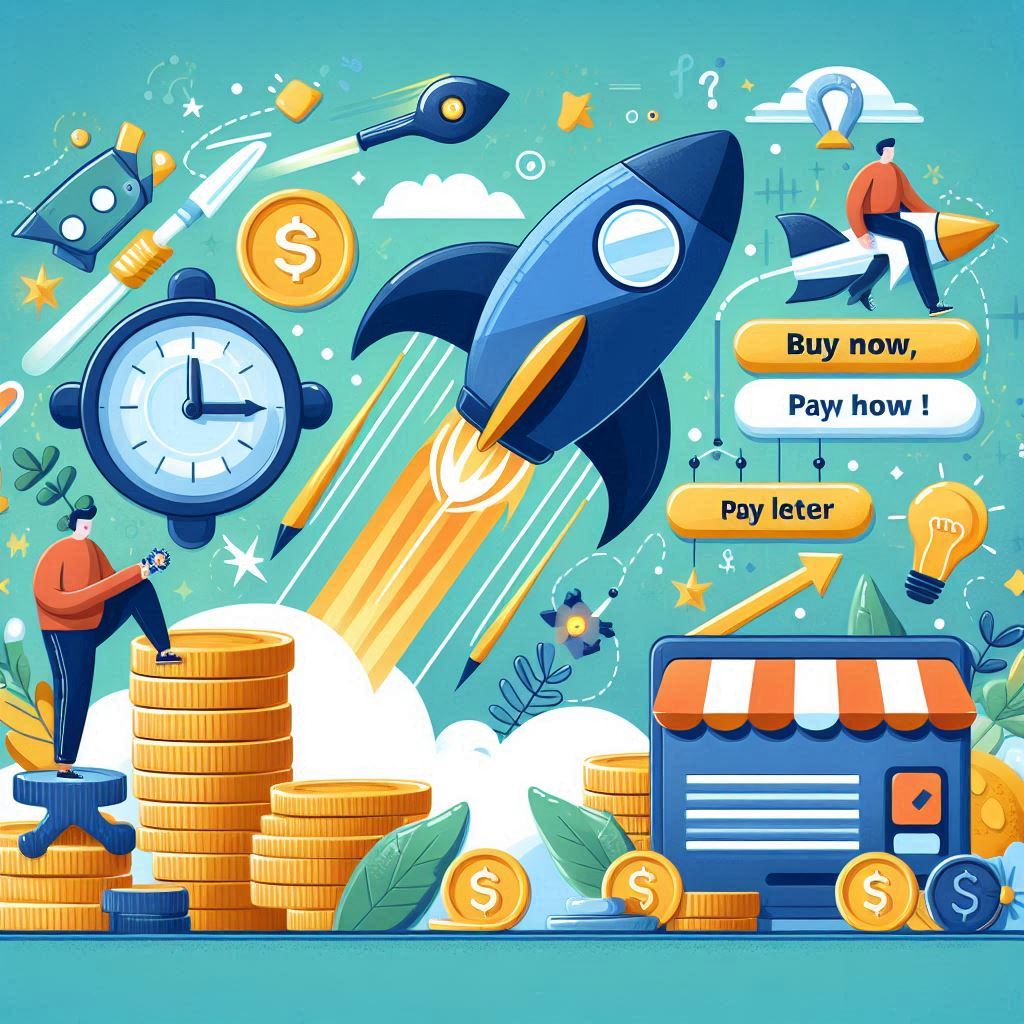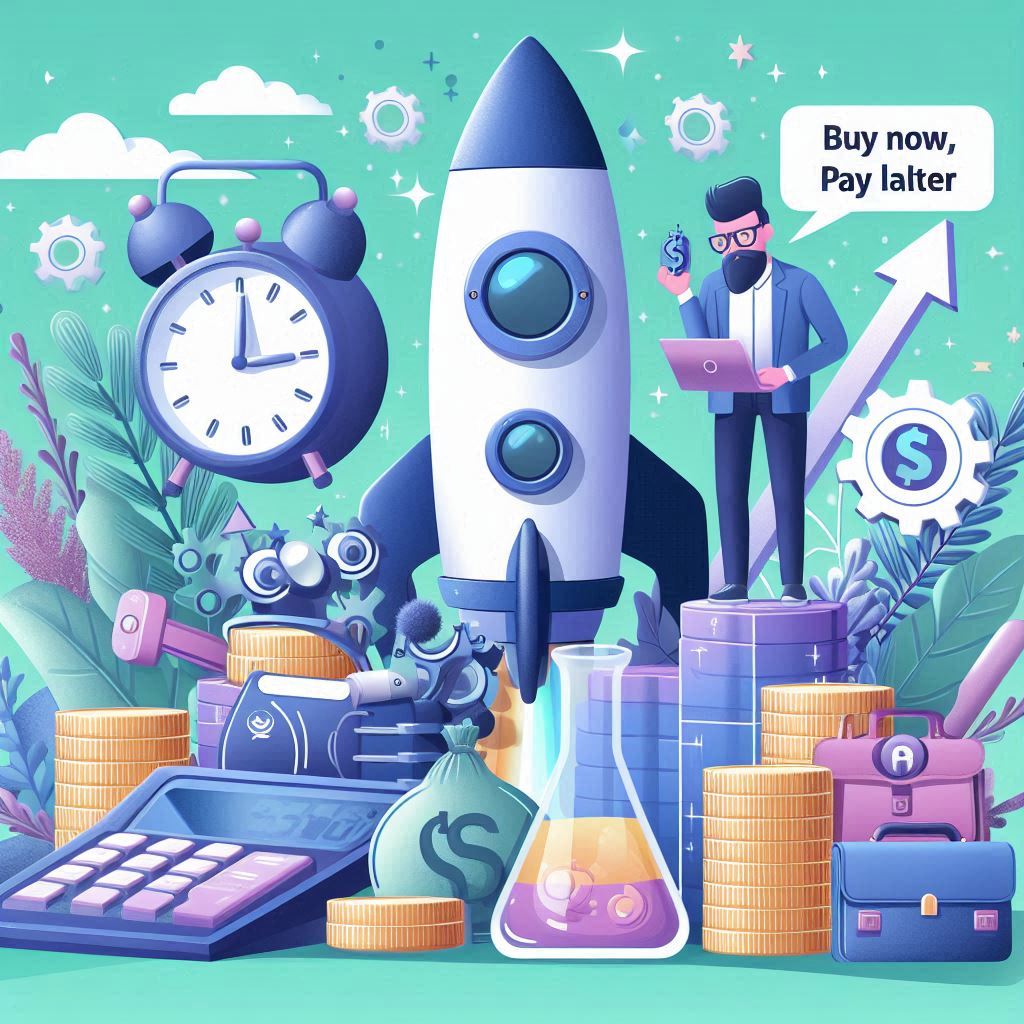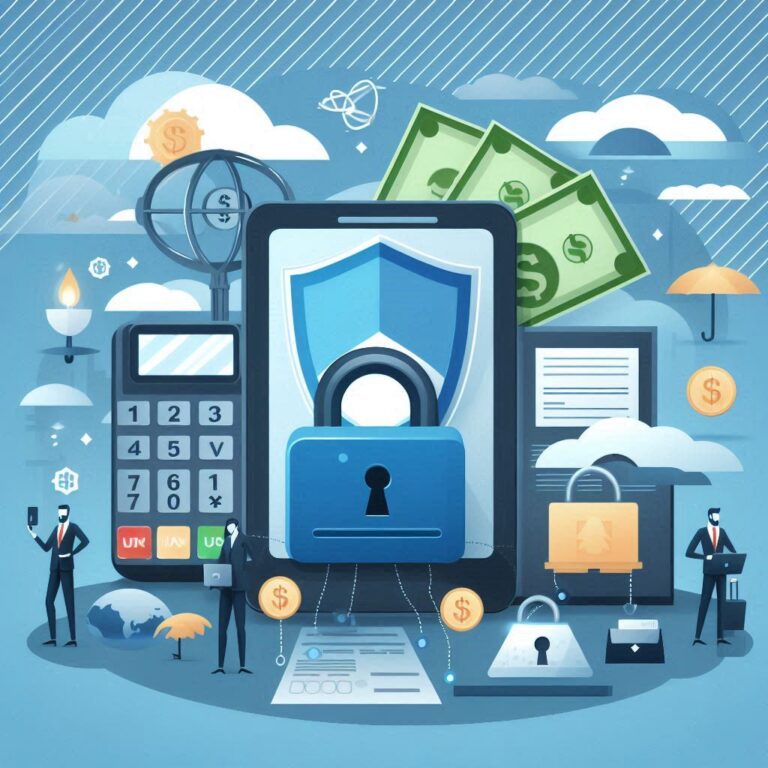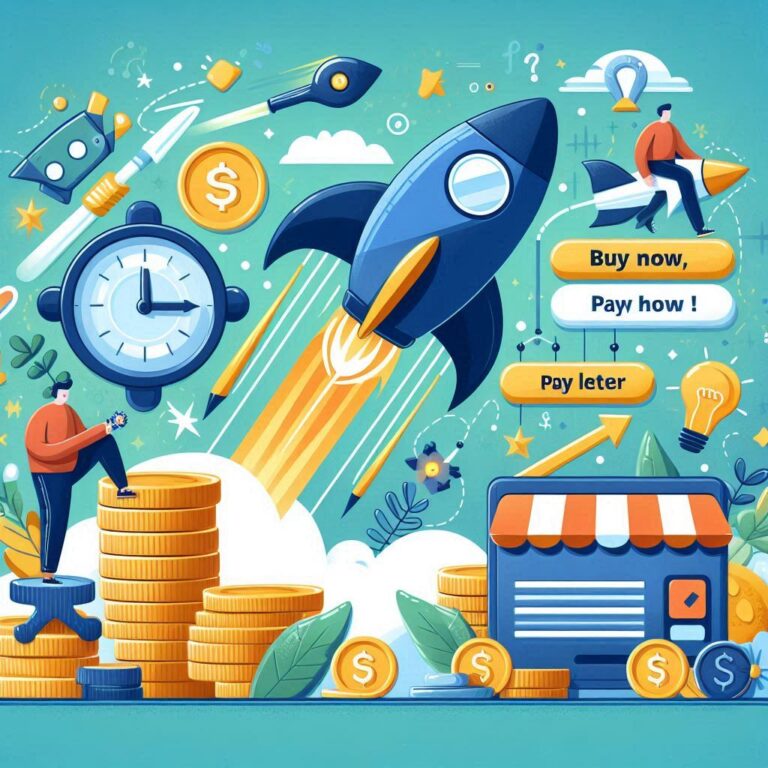Introduction
The Buy Now, Pay Later (BNPL) model is revolutionizing e-commerce by providing customers with the flexibility to make purchases immediately and pay over time. This payment method, which often incurs no interest if payments are made on time, has become a game-changer for both consumers and businesses. In this comprehensive guide, we will delve into the workings of BNPL, its benefits for various stakeholders, its role in increasing conversion rates, and much more.

Understanding Buy Now, Pay Later (BNPL)
Buy Now, Pay Later (BNPL) is a financial service allowing consumers to split their purchases into multiple payments over time. Originating from traditional layaway plans, BNPL has evolved to let customers take immediate possession of goods while spreading the cost over several months.
When a customer chooses BNPL at checkout, the provider pays the retailer upfront, and the customer repays the BNPL provider in installments. This model ensures immediate revenue for retailers while offering consumers greater payment flexibility.
Consumer Benefits of BNPL
For consumers, BNPL provides significant financial flexibility. By allowing the cost of purchases to be spread over time, consumers can manage their budgets more effectively and make higher-value purchases without immediate financial pressure.
The user-friendly nature of BNPL is another advantage. With a straightforward application process that typically takes just a few clicks at checkout, consumers can quickly access BNPL services. Moreover, many BNPL plans are interest-free if paid on time, making them an attractive alternative to traditional credit cards.
BNPL also enhances purchasing capacity. Consumers are more likely to buy products they might have otherwise postponed or avoided due to cost, resulting in increased satisfaction and a better shopping experience.
Business Benefits of BNPL
For businesses, integrating BNPL options can lead to substantial improvements in conversion rates. Offering flexible payment options reduces the likelihood of cart abandonment, as consumers are more inclined to complete their purchases when payment can be deferred.
Additionally, BNPL can drive higher average transaction values. Shoppers tend to spend more when they know they can pay over time, thus benefiting retailers with increased sales revenue.
Customer loyalty is another key benefit. By offering BNPL, businesses can attract and retain customers who prefer flexible payment options, fostering repeat purchases and long-term customer relationships.
Mechanisms by Which BNPL Increases Conversion Rates
BNPL significantly lowers cart abandonment rates by making high-cost items more accessible. When consumers can spread out payments, they are less likely to abandon their carts due to cost concerns.
Customer satisfaction is also enhanced through BNPL. The convenience and flexibility of this payment option lead to a positive shopping experience, encouraging repeat purchases and positive word-of-mouth.
BNPL helps attract diverse customer demographics, especially younger consumers who value flexibility and may have limited access to traditional credit. By offering BNPL, businesses can expand their customer base and cater to a wider audience.
Varieties of BNPL Providers
Several major BNPL providers dominate the market, each offering distinct features and benefits. Klarna, Afterpay, and Affirm are some of the leading companies, each catering to different consumer needs.
Klarna offers multiple payment options, including pay later and installment plans. Afterpay allows consumers to split their purchases into four interest-free payments, appealing to budget-conscious shoppers. Affirm provides transparent financing options with no hidden fees, making it a trustworthy choice for many consumers.
Selecting the right BNPL provider depends on various factors, including the target audience, transaction volumes, and integration capabilities. Businesses should evaluate these factors to choose a provider that aligns with their goals and customer preferences.

Implementing BNPL in E-commerce Platforms
To implement BNPL, businesses need to follow several steps, starting with selecting a suitable provider. Key considerations include integration ease, costs, and customer support. The technical integration process typically involves adding BNPL options at checkout through API integrations or plugins compatible with platforms like Shopify, Magento, and WooCommerce.
Ensuring platform compatibility is essential for a smooth integration. Businesses must verify that their e-commerce platform supports the chosen BNPL provider. Understanding the associated costs, such as transaction fees and potential setup costs, is also crucial for effective financial planning.
Case Studies: Successful BNPL Adoption
Numerous retailers have successfully adopted BNPL, experiencing significant improvements in sales and customer engagement. For example, a popular fashion retailer saw a 30% increase in conversion rates after integrating BNPL. Similarly, an electronics retailer reported a 20% rise in average order value.
These case studies highlight key metrics that demonstrate the impact of BNPL, such as higher conversion rates, increased average order values, and enhanced customer satisfaction. These success stories provide valuable insights for other businesses considering BNPL implementation.
Challenges and Risks of BNPL
Despite its advantages, BNPL presents several challenges and risks. For consumers, the ease of access to deferred payments can lead to overspending and potential financial difficulties. It is essential for consumers to manage their finances responsibly to avoid accumulating debt.
For merchants, risks include potential losses if customers default on payments. Although BNPL providers often bear these risks, businesses may still face chargeback fees and administrative challenges. Regulatory considerations are also critical, as the BNPL sector is subject to increasing scrutiny from financial regulators. Staying informed about regulatory changes and ensuring compliance is vital to avoid legal issues.
Future Directions in BNPL
The BNPL sector is continuously evolving, with emerging technologies and market trends shaping its future. Artificial intelligence and machine learning are being leveraged to improve credit assessments and personalize BNPL offerings, providing more accurate risk evaluations and tailored payment plans.
Market forecasts indicate ongoing growth for BNPL, driven by rising consumer demand and broader adoption by retailers. BNPL is expected to extend beyond traditional retail into sectors such as travel, healthcare, and education, offering flexible payment options across various industries.
Expert Opinions on BNPL
Industry experts provide valuable insights into the impact and future of BNPL. According to a leading financial analyst, “BNPL is reshaping the retail landscape by making high-ticket items more accessible to a wider audience. Its growth trajectory suggests it will become a mainstream payment option in the near future.”
Another expert emphasizes the need for responsible usage: “While BNPL offers numerous benefits, both consumers and businesses must approach it with caution. Ensuring responsible lending and borrowing practices is crucial to sustain its growth and minimize risks.”

Conclusion
In conclusion, Buy Now, Pay Later is a powerful tool for increasing conversion rates and enhancing the shopping experience. By providing financial flexibility and convenience, BNPL appeals to a broad spectrum of consumers, driving higher sales and fostering customer loyalty. Businesses looking to remain competitive should consider integrating BNPL options, while also being mindful of potential challenges and regulatory requirements. As BNPL continues to evolve, it is poised to play an increasingly important role in the future of e-commerce


